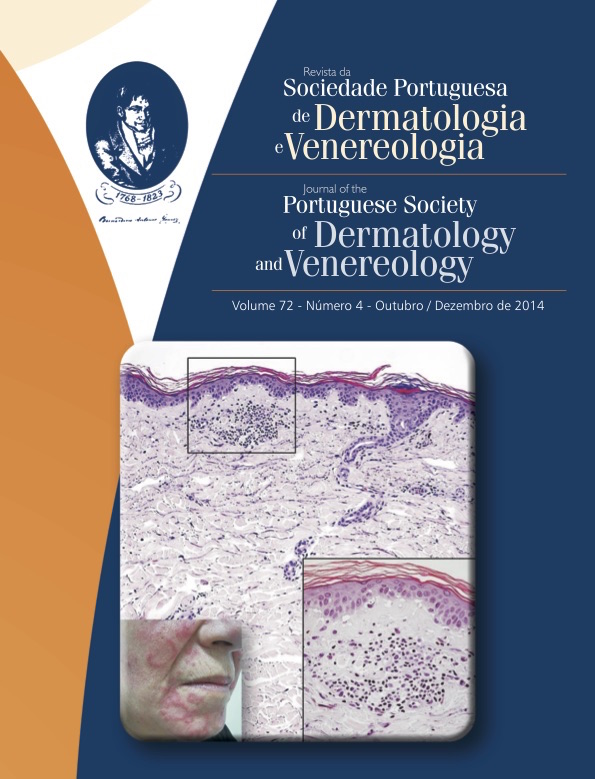CUTANEOUS INFECTION BY ONYCHOCOLA CANADENSIS – CASE REPORT
Abstract
Onychocola canadensis is a non-dermatophyte fungus that has been reported to cause onychomycosis in elderly patients. Cutaneous infection is extremely rare. Because of its slow growth and rarity, its identification is difficult, potentially giving rise to falsely negative mycologic cultures. A 65-year-old male patient presents with an exsudative circular erythematous lesion, with 3cm, on the lateral border of his right hand. The lesion was evolving for one week, with later appearance of 2 similar lesions on the 4th finger and ipsilateral forearm. A biopsy was performed and material was sent to culture. The mycologic examination revealed the growth of Onychocola canadensis. The patient was treated with oral itraconazol for 2 months, with complete resolution.
Downloads
References
Erbagcı Z, Balcı I, Erkılıç S, Zer Y, Inci R. Cutaneous Hyalohyphomycosis and onychomycosis caused by
Onychocolacanadensis: report of the first case from Turkey. J Dermatol. 2002; 29: 522-8.
Stuchlík D, Mencl K, Hubka V, Skorepová M. Fungal melanonychia caused by Onychocolacanadensis: first records of nail infections due to Onychocolain the Czech Republic. Czech Mycol. 2011; 63(1): 83-91.
Liu D. Onychocola. In: Molecular Detection of Human Fungal Pathogens. London: CRC Press; 2011. p. 303-308.
Gupta A, Horgan-Bell CB, Summerbell R. Onycho-mycosis associated with Onychocolacanadensis: Ten case reports and a review of the literature. J Am Acad Dermatol. 1998; 39(3):410-7.
Van Esbroeck M, Wuytack C, Van Looveren K, Swinne D. Isolation of Onychocolacanadensis from four cases of onychomycosis in Belgium.Acta Clin Belg. 2003; 58:190-2.
All articles in this journal are Open Access under the Creative Commons Attribution-NonCommercial 4.0 International License (CC BY-NC 4.0).








